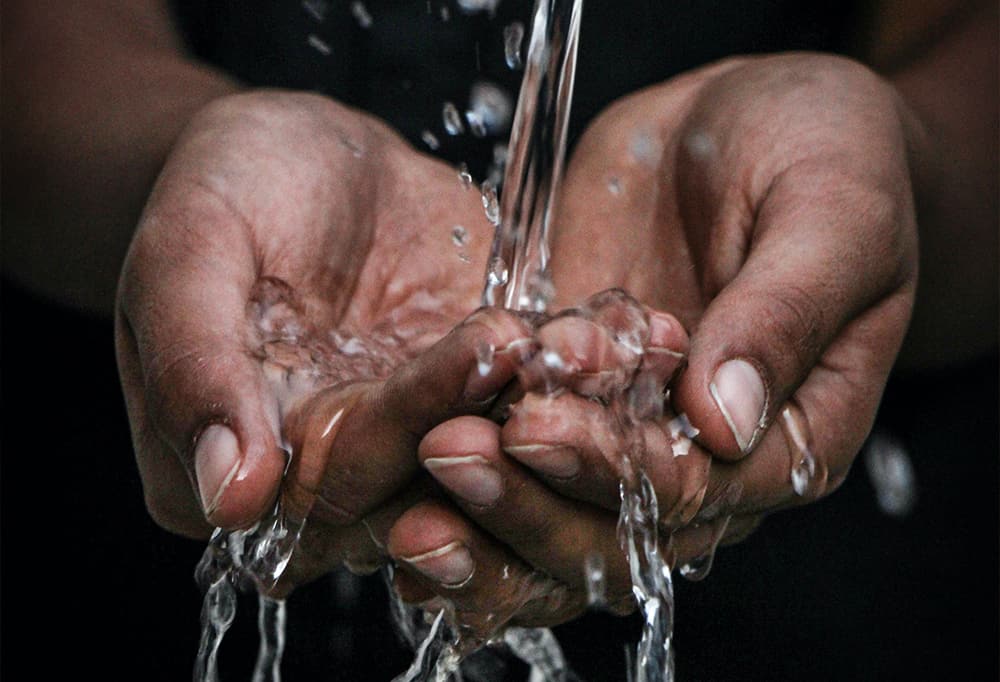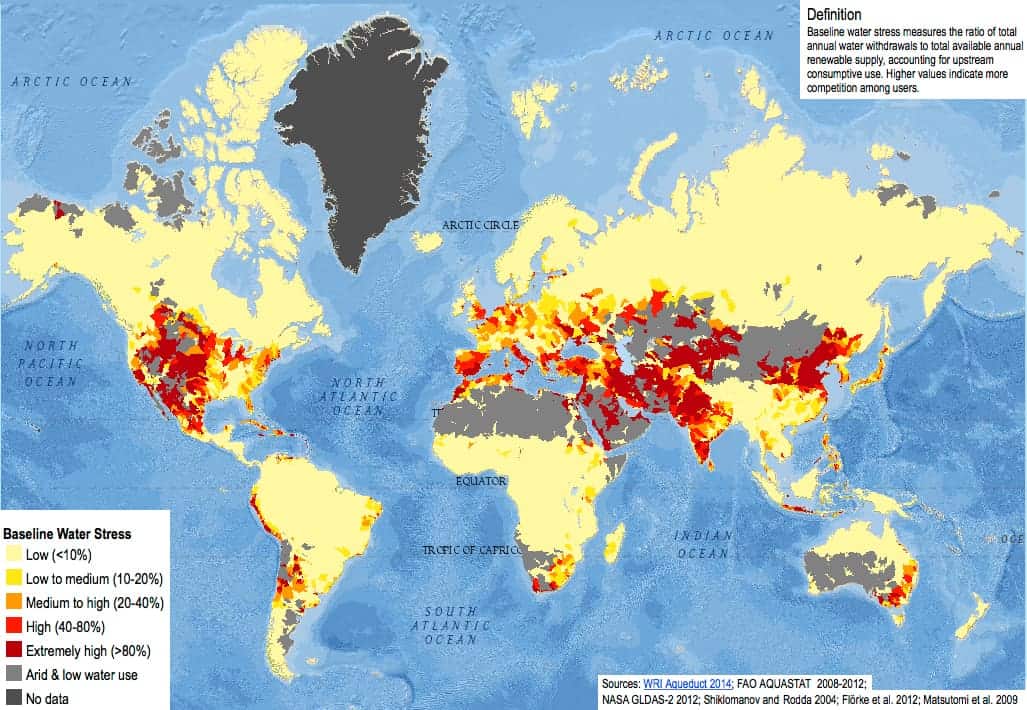Water scarcity: a major future problem
Water covers 70% of our planet, and it is easy to think that it will always be plentiful.
However, freshwater—the stuff we drink, bathe in, irrigate our farm fields with—is incredibly rare. Only 3% of the world’s water is fresh water, and two-thirds of that is tucked away in frozen glaciers or otherwise unavailable for our use.
As a result, some 1.1 billion people worldwide lack access to water, and a total of 2.7 billion find water scarce for at least one month of the year. Inadequate sanitation is also a problem for 2.4 billion people—they are exposed to diseases, such as cholera and typhoid fever, and other water-borne illnesses. Two million people, mostly children, die each year from diarrheal diseases alone.
Many of the water systems that keep ecosystems thriving and feed a growing human population have become stressed. Rivers, lakes and aquifers are drying up or becoming too polluted to use. More than half the world’s wetlands have disappeared. Agriculture consumes more water than any other source and wastes much of that through inefficiencies. Climate change is altering patterns of weather and water around the world, causing shortages and droughts in some areas and floods in others.
At the current consumption rate, this situation will only get worse. By 2025, two-thirds of the world’s population may face water shortages. And ecosystems around the world will suffer even more.

What causes of water scarcity
Water scarcity is caused by a complex set of fluctuating, interacting human and ecological factors. First of all, water scarcity is due to climate change. The increasing periods of persistent heat is caused by global warming, leads to water sources drying out. In addition, the availability and quality of water is also threathend by floods, which are caused by rising sea levels due to climate change.
Then there is, of course, the water wastage and water pollution on a large scale, which reduces the availability of (safe) water even more. Contrast all these problems with a growing world population and water scarcity emerges.
What can we do on macro and micro level
First of all increase awareness and education about water scarcity. It’s critical to generate awareness about the crisis and motivate people, businesses, and government agencies to take action. This includes educating people about the scope and impact of water scarcity, how to conserve water, and how to support water organizations helping people get access to clean water.
Invest in innovative technologies. There are promising new technologies like wastewater recycling, energy-efficient desalination plants, solar and UV water filtration, nanofiltration, and rainwater harvesting systems that can help address water scarcity.
Make agricultural irrigation more efficient. Almost 70 percent of our fresh water is used in agriculture. Enhanced soil moisture sensors, monitoring, weather stations, and communications systems can provide more accurate data to ensure water is not wasted. Growing less water-intensive crops should also be explored.
Improve water infrastructure. In the US alone, 2.1 trillion gallons of clean water are lost each year because of failing infrastructure. This not only wastes water, it wastes money. Innovative water distribution management technologies like leak detection and analytics solutions can increase a utility’s efficiency, reduce labor costs and minimize leaks.
Reduce water pollution. Stopping industry and individuals from dumping toxic substances into our water supplies and being able to accurately monitor water quality are critical steps to improving access to clean water. Consumers should dispose of toxic substances safely rather than pour them down the drain.
Encourage water conservation.
On a personal level we include some simple easy tips to save water.
- Fill sink with water when washing dishes instead of letting the water run.
- Use a bucket to catch the water while waiting for the shower to warm up.
- Don’t let the water run when brushing teeth.
- Install water-saving fixtures and appliances.
- Flush toilets only after number 2 so when necessary.
- Eliminate leaks in bathtubs, faucets, and toilets.
- Replace a high-flow showerhead with low-flow ones and use the shower coach (timer).
- Use a broom to clean sidewalks instead of water hoses.
And last, but certainly not least: use a reusable bottle. Like the ones from 24Bottles. Every time you refill your 24Bottles, you avoid -0.08kg of co2 eq from being released into the atmosphere.
sources: wwf.com, madeblue.org, poweroverenergy.org

